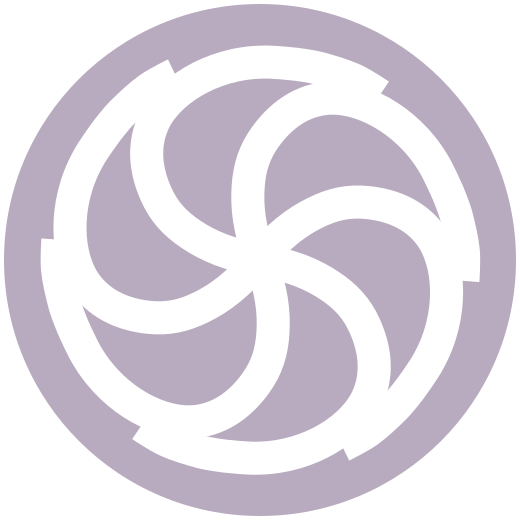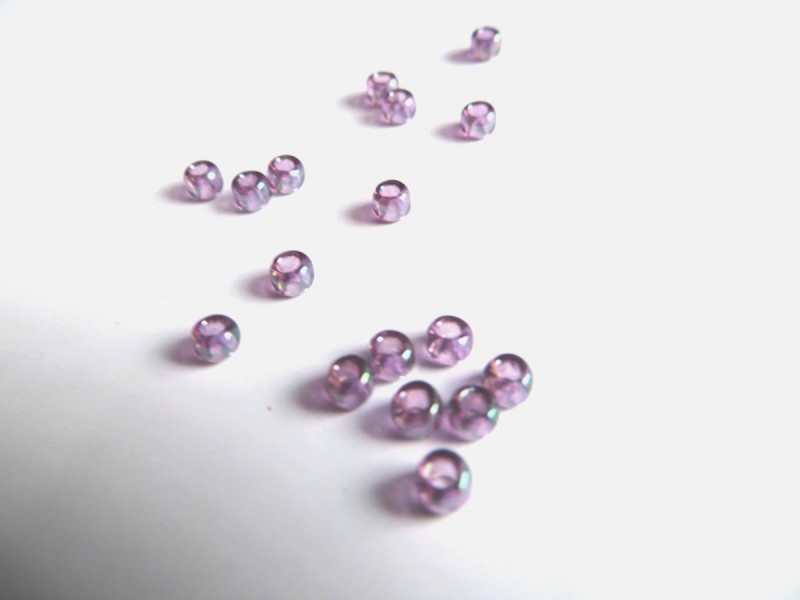Adding beads on your knitting works is an embellishment you can treat yourself to quite easily. They add sparkles to your delicate lacy shawls, feminine touch to your accessories.
Beading requires some tools, and of course beads! But wait a moment before runshing into a craft store, because there are beads and beads!
The beads on the picture above are “seed beads”, and that’s what you need to work with your knitting yarn. Seed beads have larger holes than those of ordinary beads designed for filament. The size of the beads shown above is 8/0, their diameter is 3.0 mm (0.118″), and hole diameter is 1.15 mm (0.045″).
And the most known seed beads maker are Toho and Miyuki, and they are, ahem, Japanese. Their beads are quite regular and very beautiful, and I recommend them to you 😉
Now, how do you add seed beads to your work?
There are two main methods which are different in the timing you add beads, before or in the course of knitting. The tool you need depends on the method you use. And all this will affect how the beads appear on your work – I’ll come back to it later.
The first is “stringing” or pre-threading method. You add beads to your working yarn before beginning knitting, with beading needles preferably (but you can use your sewing needle threaded, and the thread attached to the yarn).
A beading needle is a very fine needle with a large eye. Its finesse allows you to pass through beads’ holes, even those of ordinary beads.
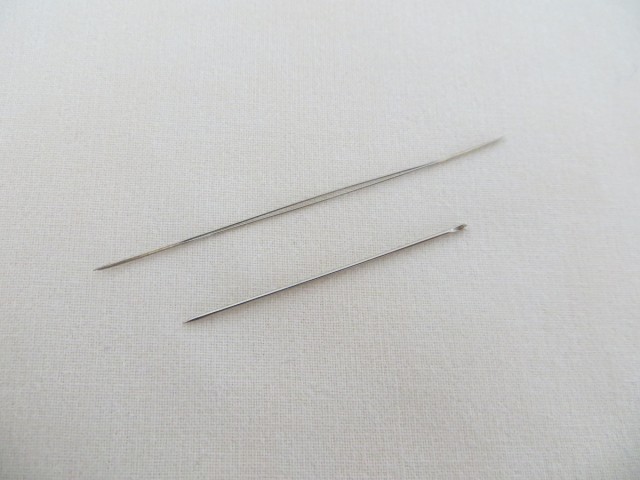
Beading needle and sewing needle
1. Thread the needle with your working yarn.
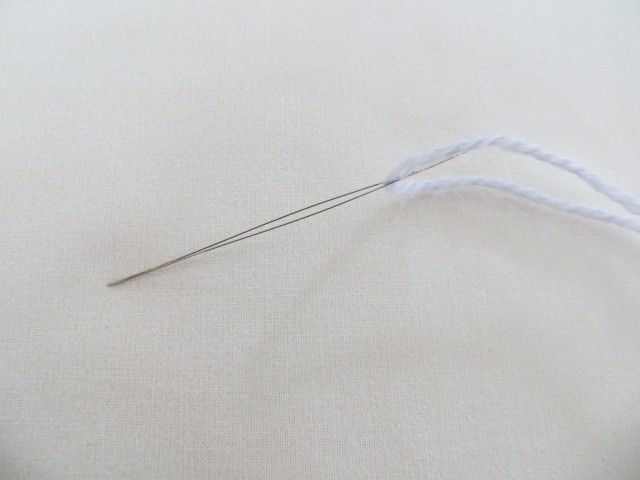
2. Pick up the beads with needle and slide them onto the yarn. And that’s all!
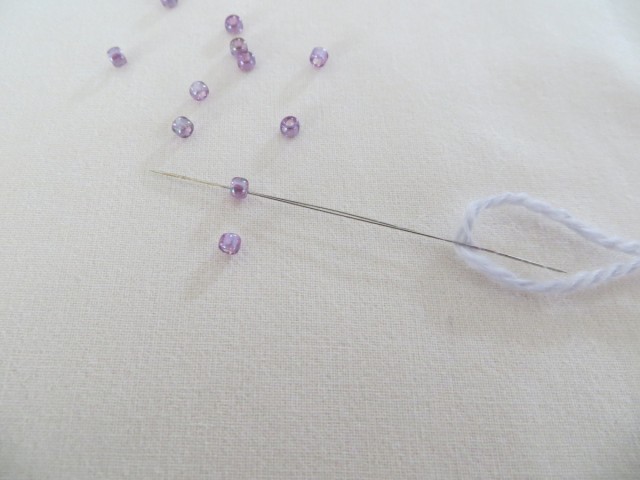
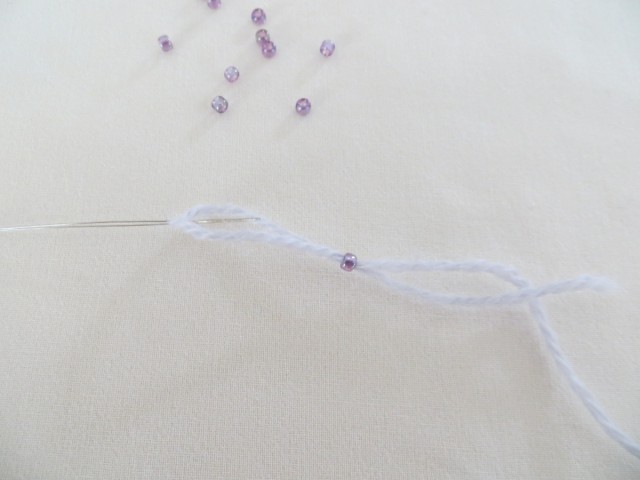
You can of course load several beads at a time 🙂
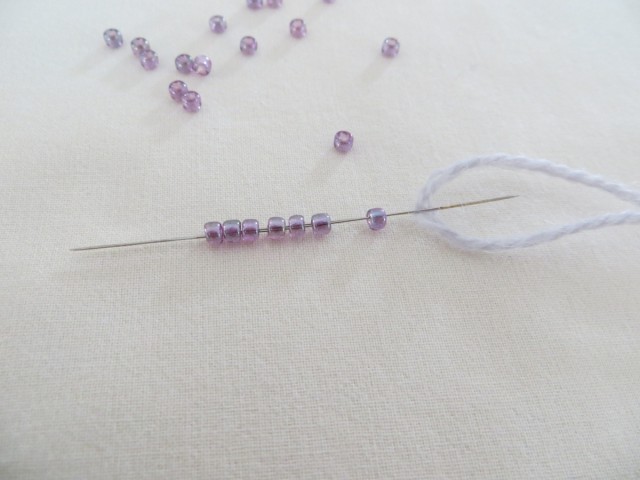
The second, which I used for my daughters’ Christmas pullover, is the crochet hook method and beads are added to stitches while knitting, with a lace (meaning very fine) crochet hook.
1. Work to the stitch to be beaded (purled here but it depends on patterns).
The arrow show the stitch to be beaded.
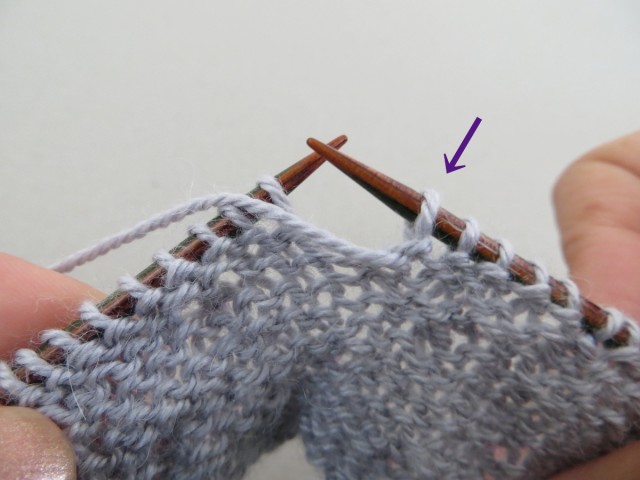
2. Catch a bead with a crochet hook.
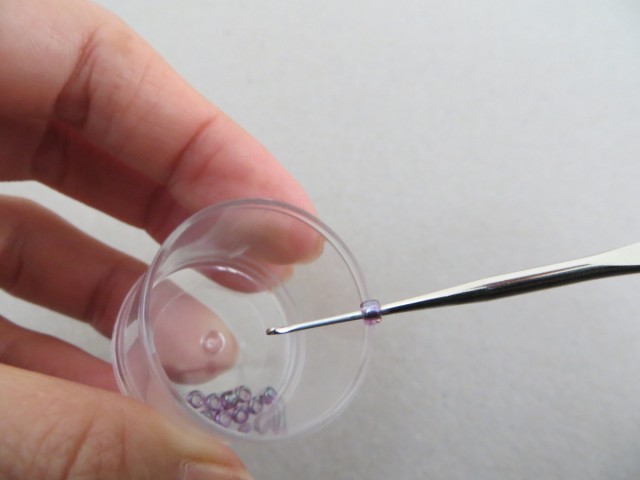
3. Drop off the stitch from right-hand needle and …
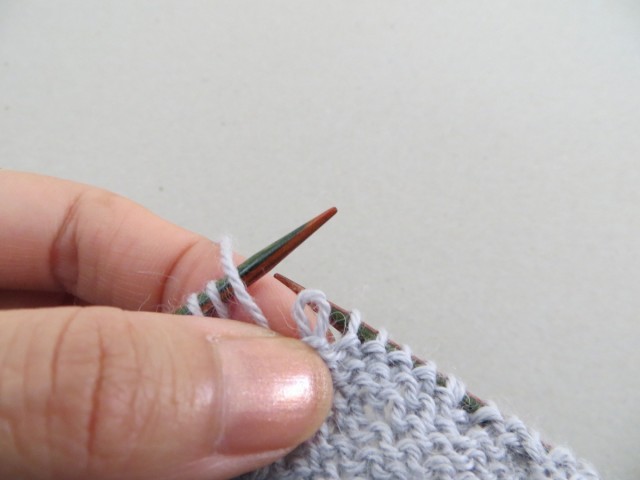
… catch the yarn with your hook.
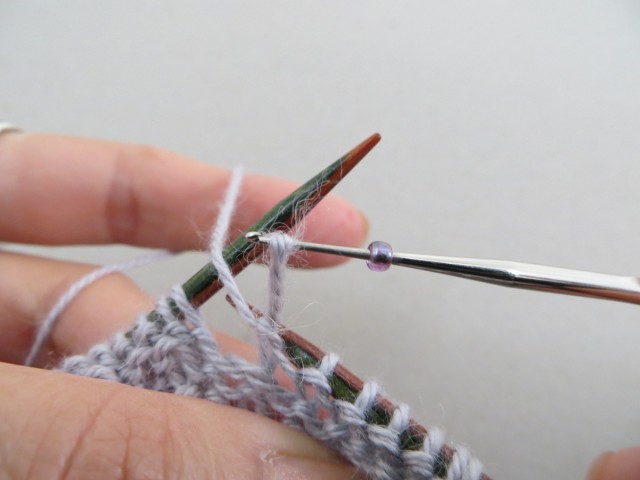
4. Hold the bead tight and pull the yarn through the hole.
In the case your yarn is thick, you should be firm in your gestures. But when it wouldn’t come through, try another bead and don’t dame your yarn!
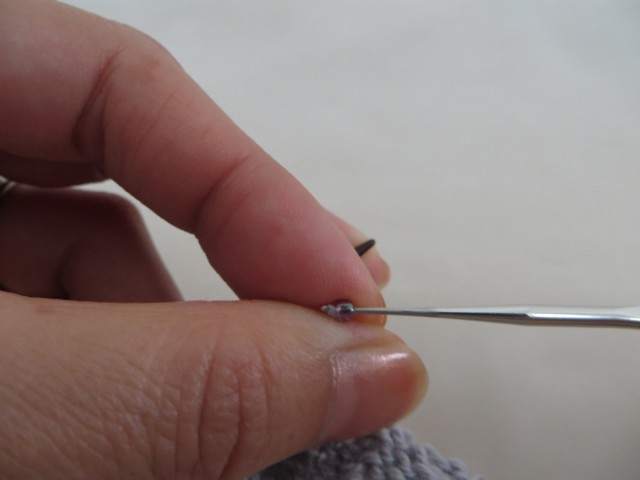
Et voilà!
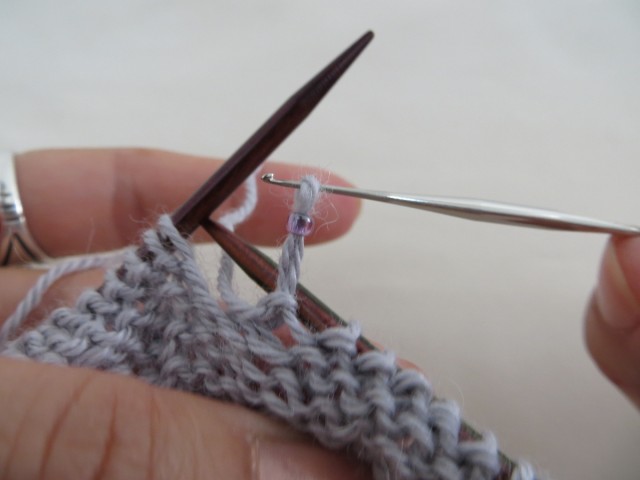
Then replace the stitch on the right hand needle and adjust the tension, gently pulling the yarn.
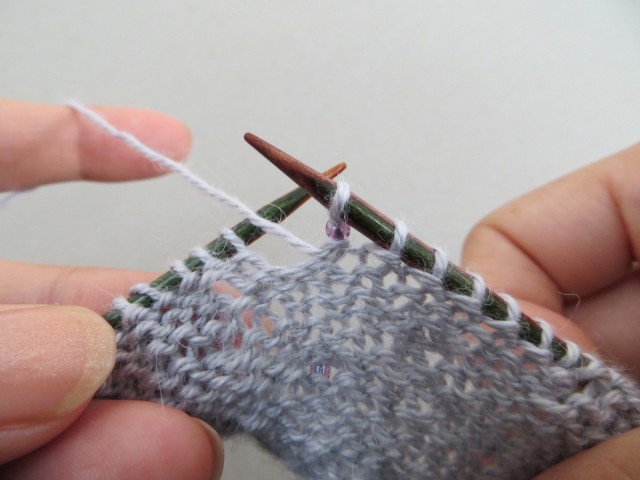
Some tutorials say you can use the method you’re comfortable with, but I think we should chose our method taking account of the position (therefore, the look) of beads.
They are on the yarn with the stringing method, and you can use it for picots, or with “slipped stitch with yarn in front” for Stockinette stitch, or for Garter stitch fabric (they’ll sit on the ridges).
The second method adds beads onto stitches, and when you want your beads to sit in the center of stitches, this is the method you have to use.
I’m saying this because I’ve had an unfortunate experience. I tried first the stringing method as it seemed easier, but it was not adapted to the stitch pattern I used.
Here’s the swatch of the Quilted lattice stitch with stringing method.
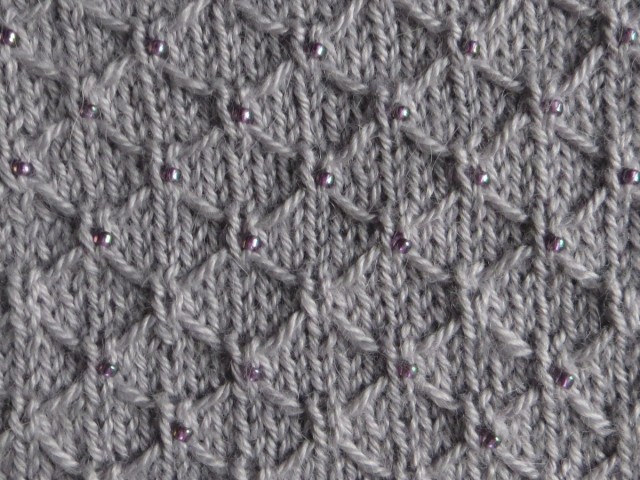
The beads are on one of the loop of stitches, and this was not what I intended.
And the swatch with the crochet hook method.
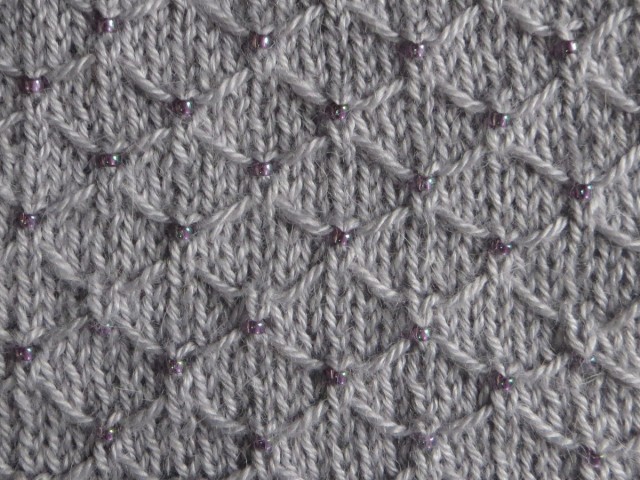
Isn’t it nice? 🙂
In the next post, I’ll talk about the sizes of beads, yarn and crochet hooks.
